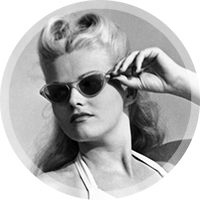

One of the psychological rhythms I’ve carried with me into adulthood is that fall is for new starts and fresh work. With eighty-degree weather in Chicago and Labor Day still pending, it’s not quite fall yet—but my own summer of lax habits and project breaks is coming to a close and now I’m rededicating myself to Doing Things.
This past week, comic writer and all-around heroine Kelly Sue DeConnick wrote about her struggles with productivity in her and her husband’s newsletter, which resonated with me, as another busy working mother, keenly. Last March, I wrote an essay about how I do everything, which was more of an emotional release of pressure built up over the past couple of years rather than an accurate description of a current state. Truth be told, I’ve struggled more with doing everything over the past few months than I had previously. And I’ve realized that I might have been struggling even previously, or at least accomplishing things at a higher price of health and self-care than necessary. I also came to understand I was burned out from past work. So, recently, I rebooted. I cut ties with people, communities and habits that were distracting me. I unplugged from constant information streams that were draining me. I put more effort into taking breaks and vacations. But then it’s time for the next step—getting back to working, better.
So this is how I’ve been doing that, practically. Yes, this is an essay about my Productivity Hacks. It had to happen at some point.
As a pen and paper aficionado, I’ve long relied on a certain system of planners and list-making. I recently leveled up that system by adopting much the notation of the Bullet Journal. For years, I’ve used a Moleskine combination calendar/notebook, with appointments/meetings on the left and tasks on the right. I use Moleskine Cahier journals for ongoing tasks lists and notes for my job and various projects. When I need a higher-level look at everything going on, I break out the index cards, write projects, tasks and notes on them and physically move them around. I have tried at various points to move my personal organizational system to digital formats, but none ever stuck. So I’m sticking to paper. Whatever documents I do keep in digital format (for example, Report drafts), go into Evernote.
I write every morning and often every evening in my journal. It’s an essential way to keep my thoughts straight. For almost fifteen years, my journals have been college-ruled composition books. Fancy blank books stymie me. I prefer the freedom of cheap, familiar notebooks. I have started incorporating more of a logbook style in my journals, which helps me keep track of past events, accomplishments and discoveries (see also: Austin Kleon on keeping a logbook).
My next step is better daily scheduling. I’m working on blocking out my time for specific tasks and projects, and resisting multitasking. I do personal project work early in the mornings, and shut down the work day at a particular time so that I can spend the evenings doing something else altogether (like playing LEGO Indiana Jones for the Wii, which is my current favorite evening activity).
Like Kelly Sue says: “The best systems are those that disappear. The best tools are the ones that bring enough pleasure to the process to enhance the experience of ACTUALLY DOING WORK without overshadowing it.” And like William Burroughs said: “The price an artist pays for doing what he wants is that he has to do it.” Artist or not, once you’ve built the right platform, then it’s time to work. The best way to work includes breaks and thought about process. But you can’t forget, in all of the breaking and process thinking, about the plain, hard work. Which is the same lesson in my first essay about how to do everything, after all. And the best part about it is that then you get to think about all the things you’ll do next.